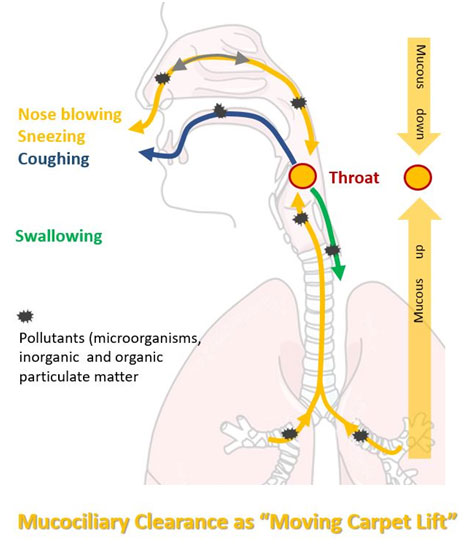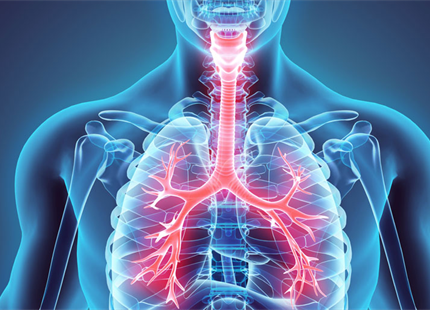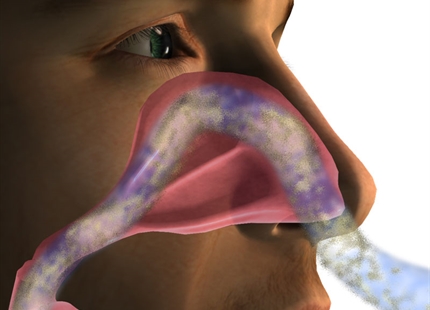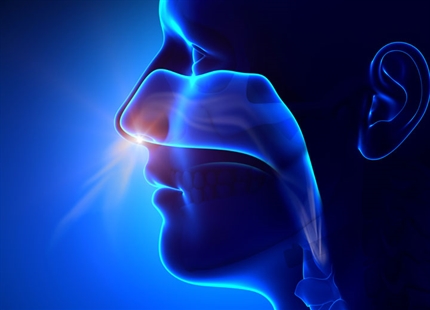
Impact de l'air sec sur notre système de défense des voies aériennes
Le nez et la gorge constituent la première ligne de défense de notre organisme dans la lutte contre les polluants et les microbes contenus dans l'air que nous respirons. Leur rôle est de filtrer, d'humidifier et de réchauffer l'air avant qu'il ne pénètre dans les parties plus sensibles de notre système respiratoire et ne nous cause de réels dommages.
L'élément central de ce mécanisme de défense est une couche de minuscules structures en forme de cheveux, appelées cils, à l'intérieur de nos voies respiratoires, ainsi qu'une fine membrane de mucus qui les recouvre. Les polluants en suspension dans l'air, tels que les particules, les allergènes, les virus et les bactéries, sont capturés par cette membrane muqueuse collante et éliminés de l'air. La couche de mucus piège et élimine la plupart des intrus potentiels dans nos voies respiratoires et sert de "tapis roulant" défensif.
Les minuscules cils effectuent des mouvements de va-et-vient plusieurs fois par seconde pour transporter le mucus et son chargement vers notre gorge. Il est ensuite avalé ou expulsé par la toux, et donc détruit ou rendu inoffensif.
Si l'air que nous respirons est inférieur à 40%HR (humidité relative) pendant une période prolongée, cette couche de muqueuse se dessèche. Cela peut endommager les cils, inhiber notre capacité à filtrer les polluants de l'air que nous respirons et nous rendre vulnérables aux infections transmises par l'air.
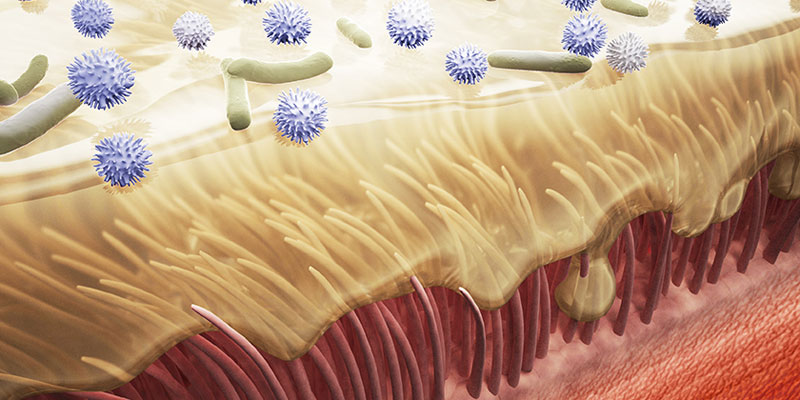
Les muqueuses de nos voies respiratoires piègent les polluants en suspension dans l'air et de minuscules cils les transportent jusqu'à notre pharynx, où ils sont avalés ou expulsés par la toux.

Dans les environnements à faible taux d'humidité (moins de 40 %), nos muqueuses s'assèchent et le processus de "clairance mucociliaire" est altéré. Nous sommes donc plus sensibles aux infections transmises par l'air, comme la grippe ou le rhume.
Études scientifiques montrant comment l'air sec affecte le système de défense des voies respiratoires
Faible humidité de l'air = Plus de cas de grippe
L’étude scientifique du Dr. Akiko Iwasaki (Université de Yale, mai 2019) a montré que le climat intérieur hivernal avec une faible humidité dans les ...
Lire l'articleRitzel G 1966
Study of child absenteeism due to colds from two kindergartens with different humidity levels
Lire l'articleGreen G 1975
Absenteeism was monitored in Canadian schools, alongside %RH, to see if any correlation existed between humidity and illness.
Lire l'articleSale C 1972
Study of respiratory infections in nursery/kindergarten school children (2.5-6yrs) in humidified and non-humidified buildings.
Lire l'articleGelperin A 1973
Study of respiratory illness in Army recruits accommodated in barracks with and without humidity control.
Lire l'articleGreen G. 1981
Monitored staff absenteeism across three hospitals alongside their indoor humidity levels.
Lire l'articleEwert G 1965
Observational study of how long it took tracers placed inside the human nose to travel 2mm at varying levels of air humidity.
Lire l'articleTaylor S, Hugentobler W. 2016
Studied the correlation between environmental conditions in patients' rooms and the occurrence of healthcare associated infections.
Lire l'articleSalah et al 1988
Étude montrant comment l'air sec affecte le désencombrement mucociliaire, qui est le principal moyen de défense de notre système respiratoire contre ...
Lire l'article